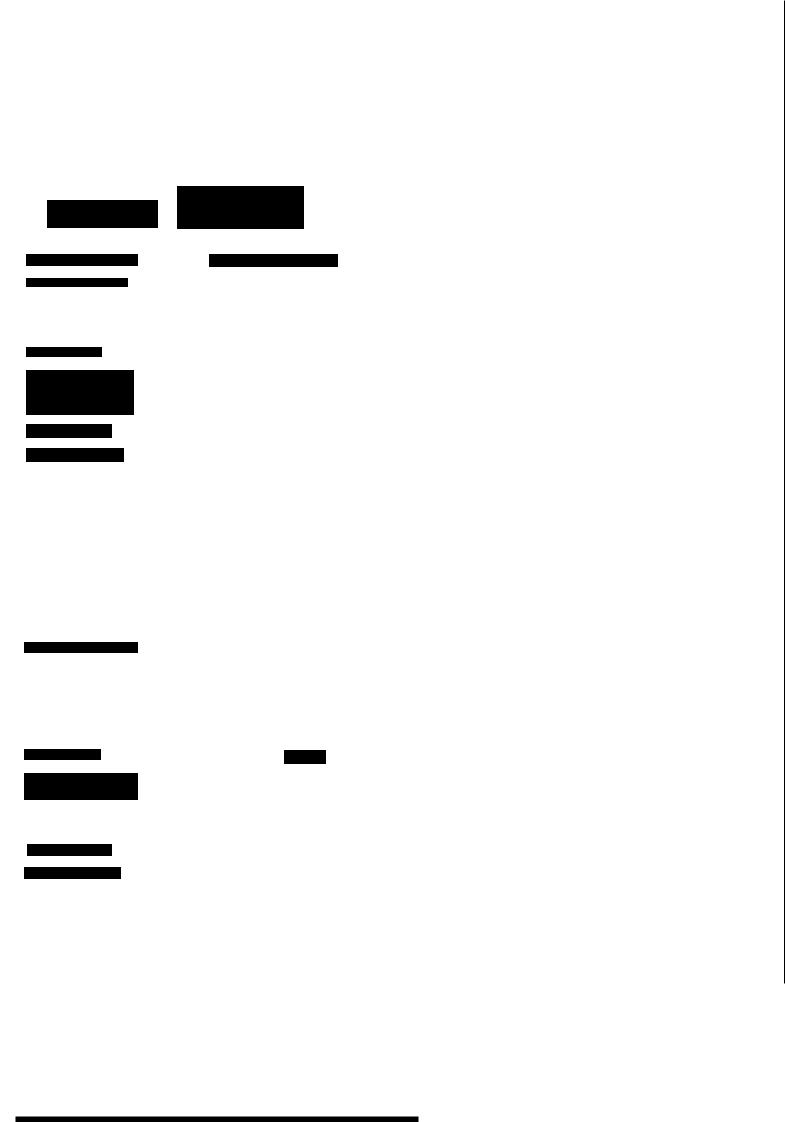
Objective KET SB
.pdfCAMBRIDGE UNIVERSITY PRESS
Cambridge, New York, Melbourne, Madrid, Cape Town, Singapore, Sao Paulo
Cambridge University Press
The Edinburgh Building, Cambridge CB2 2RU, UK
www.cambridge.org
Information on this title: www.cambridge.org/9780521541497
© Cambridge University Press 2005
This book is in copyright. Subject to statutory exception
and to the provisions of relevant collective licensing agreements, no reproduction of any part may take place without
the written permission of Cambridge University Press.
First published 2005
Reprinted 2005
Printed in Dubai by Oriental Press
A catalogue record for this publication is available from the British Library
ISBN-13 978-0-521-54149-7 Student'sBook
ISBN-10 0-521-54'49-2Student'sBook
ISBN-13 978-0-521-54150-3 Teacher'sBook
ISBN-10 0-521-54150-6 Teacher'sBook
ISBN-13 978-0-521-54151-0 Cassette Set
ISBN-l0 0-521-54'51-4Cassette Set
ISBN-13 978-0-521-54152-7 Audio CD Set
ISBN-lO 0-521-54152-2 Audio CD Set
Cover design by Dale Tomlinson
Designed and produced by Kamae Design, Oxford

TOPIC |
EXAM SKillS |
GRAMMAR |
|
VOCABULARY |
||
|
56-59 |
for information |
The future with |
to |
Travel, space |
|
':!.l |
|
|
|
and will |
|
|
9.2 |
|
|
|
|
|
|
future |
|
|
|
|
|
|
|
|
Paper 2 Listening: Part 2 |
The passive - present and |
Furniture, materials |
||
|
62-65 |
Paper 1: Part 2 (Rcading) |
past simple |
|
Opposite, |
|
In. t |
Inside the homc |
|
|
|
|
Ruildings |
10.2 |
Famolls buildings |
|
|
|
|
|
|
66-67 |
|
and Writing: Part 4 tReading: Right, Wrong, Doesn't |
|||
|
|
Paper 1: Parts 3 and 4 |
Word order in questions |
Sport and sports |
||
|
|
Paper 2 Listening: Part 5 |
Verbs in the -ing fonn |
|
equipment |
|
|
|
Paper I: Part 6 |
(Writing) |
|
|
Fitness |
|
72-73 |
Paper 1 Reading and Writing: Part 9 (Writing) |
|
|
||
|
74-77 |
Paper 2 |
Part 3 |
Possessive adjectives and |
People in a family |
|
12.1 Family trees |
Paper 1: Part 4 |
(Reading: |
pronouns |
|
|
|
12.2 Large and small |
Right, Wrong, Doesn't |
Subject, object and |
|
|
||
|
|
|
|
reflexive pronouns |
|
|
|
|
|
|
Everything, something, |
|
|
|
|
|
|
anything, etc. |
|
|
Units 9-1~ Revision 78-79 |
|
|
|
|
|
|
|
|
Paper 2 Listening: Part 2 |
(Not) as ... as |
|
Weather |
|
80-83 |
Paper I: Part::; (Reading) |
Enough and 100 |
|
|
||
13.1 SUll, rain or snow? )3.2 Too much weather!
|
Paper 2 Listening: Part 2 |
|
|
|
Paper |
2 Listening: Part 4 |
Po~ition of adjectives |
86-89 |
Paper |
1: Part 3 (Reading) |
[(ather than |
14.1Something good to
read
14.2Learn something new!
90-91 |
Paper 1 Reading and |
Part 3 (Reading) |
|
Paper 1: Part 4 (Reading: |
Present perfect |
|
multiple choice) |
Just and yet |
15.1 Working hours |
Paper 2 I.istening: Part 3 |
|
15.2 Part-time |
|
|
96-97 |
Paper 1 Reading and |
Part 8 (Writing) |
|
Paper 3 Speaking: Part 2 |
Modal verbs 2: must, |
98-101 |
Paper 2 Listening: Part 1 |
mustn't, don't have to, |
J6.1 Journeys |
|
should, need to, needn't |
16.2 A day out |
|
|
School subjects, education
Work,jobs
'I'ransport
Collocations with transport
Directions
102-103
PRONUNCIATION (P)
AND SPElLING (S)
(Pl/h/
(S)Words ending in -y
(S)Words ending in -fand
-fe
(P)Dates (years)
(P) Ibl basketball, IvI volleyball
(S) gu-, qu-
(1') lau/ cow, /:>:1 draw
(S) Words ending in -le
(P)Unstressed words with
/;)/
(S)to, too and two
(P)Silent consonants
(S) Words that are often confused
(S) Words ending in -er and -or
(F)JOI clothes, lei thirsty
(P)Weak and strong forms
(5) ior e?
4- MAP QF QBJECTIVE KET STUDENT'S BQQK

TOPIC
104-107
17.1 'lcchno Star
17.2
108-109
II0-1 J.3
18.1well!
J8.2 .\ long and happy life
114-115
19.1Let';; communicate!
19.2Different languages
EXAM SKILLS |
GRAMMAR |
VOCABULARY |
PRONUNCIATION (P) |
|
|
|
|
AND SPElLING (5) |
|
Paper I: Part (R<:ading) |
Infinitive of purpose |
|
(Ill, .ontractions |
|
Paper 2 Li6tening: Part :\ |
Infinitive with and |
Collocation, with K['I, |
is) |
mistake:, |
|
without |
make, watch. sec |
|
|
Paper 2 Listening: Part 3 |
|
|
|
|
Paper 1: Part 6 (Writing) |
\:Vord order of timc |
P,uts of the |
(I') |
Linking sounds |
Paper 1: Parts 3 and 4 |
phrases |
Ilealth |
(S) Words which dOll'! |
|
(Rcading) |
First conditional |
|
double their Ia.,( letln |
|
Paper 2 Listening: Part .5 |
|
|
|
|
Paper I' Part 9 (Writing) |
|
|
|
|
Paper 1 Reading and Writing: Part 4 "C,dU1H". Multiple choice) |
|
|
||
Paper 2 Listening: Part 2 |
of |
Letters, emails.de. |
(PJ Word stress |
|
Paper I: Part 7 (Writing) |
of time |
Countries, |
|
Spellings of the sound |
Paper I: Part 5 (Reading) |
|
nationalities |
/i:i |
|
120-121 Paper 1 Reading and Writing: Part 9 |
|
|
||
122-l25 |
Paper I: Part 4 (Reading; |
Review of tenses |
people |
Sentence stress |
20.1 Famous people |
multiple choice) |
|
|
ckor k? |
people |
Paper 2 Listening: Parts 4 |
|
|
|
|
aadS |
|
|
|
|
Paper 3 Speaking: Part 2 |
|
|
|
|
Paper 1: Part 6 (Writing) |
|
|
|
 Revision
Revision
Extra material 128-134
Grammarfolder 135-146
VOI:abularv folder 147-150
list of irregular verbs 151
Acknowledgements 152

Content of the KET examination
The KET examination consists of three papers - Paper 1 Reading and Writing, Paper 2 Listening and Paper 3 Speaking.
There are four grades: Pass with Merit (about 85% of the total marks); Pass (about 70% of the total marks); Narrow Fail (about 5(% below the pass mark); Fail. For a Pass with Merit and Pass, the results slip shows the papers in which you did particularly well; for a Narrow Fail and Fail, the results slip shows the papers in which you were weak.
Paper 1 Reading and Writing 1 hour 10 minutes
(50% of the total marks)
There are nine parts in this paper and they are always in the same order. Parts 1-5 test a range of reading skills and Parts 6-9 test basic writing skills. You write all your answers on the answer sheet.
|
Tasfi:Ty" |
.. . |
Tasfi:Format |
|
|
• |
•••• |
||
|
|
|
||
. ReadlllgM;attfiil'lg |
5'\ i i~.a~~it:cbfiV~·$;~t~tIc~~io~ight;~l~es.'; . ..~• |
|||
Part) |
|
|
;. ···~btc~o~t~~rf~h~"'~rdsi~JompletefM~~,~~~te~.;<;· |
|
I(ea~jflg |
MJ.dttpl~~hoice |
|
|
|
.partj |
{~Bi~rq |
|
|
~~i~;~4,·'J·l~~~~~on~1 |
Part 2 |
{A,ll or,C) |
|
|
|
Re~ir:g·. ~{il~ipfe(hoice |
|
|
|
|
|
,4;~O |
|
|
Jd~·i~O~$~·~v~~~;~efsfrom.~g~tQ~CQ~P'~t~~;co~versaUQn; |
|
Matching |
|
|
|
|
Rlcght fWrong I |
|
|
.·~~E~~~~Y'Jet"~~\t~!lg~~&UOfl$o9~~t~~ffhiti{uptoZ30 words long: |
|
Doesn't say |
|
|
|
|
OR |
|
|
|
|
Multiple choice |
|
|
|
|
(A. Bar C) |
|
|
|
Reading |
Multiple choice |
|
g |
You Ch,)osjeUI~i:rgtJf~9(,qI~tl~tt5",1~IeI:eelght spaces in a short text. |
Parts |
(A,BQf C) |
|
|
|
Writing |
Word completion |
|
5 |
|
Part 6 |
|
|
|
|
Writing |
Open doze |
Part 7 |
|
Writing |
Information |
Part 8 |
transfer |
Writing |
Short message |
Part 9 |
(5 marks) |
10 |
Vou ffll ten sp<.'lces in |
stich as a postcard with singlewords, |
|
spelled cortectly. |
|
5Vou complete a set Of notes or a fOrm with information from one or two texts.
You write a short message. such as a note or postcard (ZS-35 words), which includes threepit~tesof information,
Objective
Exam folder
EF1Q
WFl
WF2
WF 3, WF 5
6 co NTE NT 0 F TH E K ET EXAMI NATIO N

Paper 2 Listening about 30 minutes, including 8 minutes to transfer answers
(25% of the total marks)
There are five parts in this paper and they are always in the same order. You hear each recording twice. You write your answers on the answer sheet at the end of the test.
|
TaskTy~ |
|
'. |
Task format |
.. |
|
|
t'• |
|
|
|
Listening |
Multiple choke |
• |
|
You answer five questio-f:l5 hy choosing the correct picture, word or |
EF1 |
Part 1 |
(A,Bore) |
S |
|
number. There are tWo. speakers in each short cOflVersation. |
|
|
|
|
|||
Listening |
Matching |
5 |
|
You mat€.h five questions with eight possible answers. |
|
Part 2 |
|
|
|
There are two speakers. |
|
listening |
Multiple choice |
5 |
|
You answe(fivequestions about a conversation between two speakers. |
EFg |
Part 3 |
(A, Bore) |
|
|
|
|
Listening |
Gap fill |
5 |
|
You complete fi'1le spaces in a set of notes. There are two speakers. |
|
Part 4 |
|
|
|
|
|
Listening |
Gap fill |
5 |
|
You complete five spaces in a set of notes. There is one speaker. |
|
Part 5 |
|
|
|
|
|
Paper 3 Speaking 8-10 minutes for a pair of students
(25% of the total marks)
There are two parts to the test and they are always in the same order. There are two candidates and two examiners. Only one of the examiners asks the questions.
II |
TaskTy~ |
|
Task fOrmat |
Speaking |
The examiner asks both |
5-6minutes |
VO:u must give information about yours.elf. |
Part 1 |
candidates some questions. |
|
|
Speaking |
The candidates talk together |
3-4minutes |
you: are given some material to help you ask |
Part 2 |
to find out information. |
|
and~n~Wer questions. |
EF 5
EF 5
, |
GO N TEN T 0 F THE K ET EX A MIN AT I 0 ~ 71 |
more reasons
They don'ttell you lies.

Pronunciation
3
1 |
______ (a popular film) |
||
2 _ _ _ _ _ _ _ _ |
_ ___ (a film star) |
||
3 _ _ _ _ |
_ _____ (a boy in a cartoon) |
||
4 |
_ _ _ _ |
_ _ _ _ _ _ _ ______ (a tennis player |
|
5 |
_ _ _ _ _ |
_ _ _ _ _ _ _ (a football player) |
|
6 _ _ _ _ _ _ _ |
_ ______ (an actress) |
||
7 |
_ _ _ _ _ _ _ |
_ ________ (a film director) |
|
5
|
|
1 What's your best friend |
|
|
|
|
called? |
|
|
2 |
Can you spell that? |
1 |
|
3 |
Howald is he or she? |
'i |
4 |
When do you meet? |
|
|
Best friend is |
||
|
5 |
Where do you go together? |
|
|
How old is he? |
||
|
6 |
What do you do together? |
|
|
What do they do together? |
||
|
7 |
Why is your friend special? |
|
|
|
||
|
|
6 |
|
2
Best friend is ...............................
When do they meet? ....................................................
3
Best friend is
Why is she special? ...............................
Howald is Kelly-Anne? ...............................
4
Best friend is ...............................
Where do they go together? ............................................
asking |
answering |
OK ... |
Well ... |
Right ... |
That's easy. |
So ... |
That's difficult. |
And ... |
That's right. |

 '1
'1
In Part 1 of the Listening paper, you will hear some short conversations on different topics. There are always two speakers (usually a man and a woman). There are five questions and an example question. You must choose the correct answer from options A, B or C. These options can be pictures, words or numbers.
Note: Write your answers on the question paper during the test. You do not transfer any answers to the answer sheet until the end of the test.
Here is an example of the answer sheet for Part 1. You must write your answers in pencil.
|
question. Read the question and |
Match |
||
parts |
to pictures A, B or C. Then look at |
other words the |
||
|
and |
on |
correct answer. |
|
What did David do after school?
A |
B |
|
Mother: You'relate, David. Did you |
in |
|
David: Mum, it was too sunny to be inside! They won the match! I can
. Mother: I suppose so. Well, why don'tyou David: She'sbusy with her homework.
c
before dinner?
Exam advice
Before you listen
•Read the questions and look at the choices to help you understand the topic.
•Underline the important words in each question.
First listening
•Listen out for the underlined words or words that are like these. In the example above, the word school is in the question, and the word lessons is on the recording.
•Remember to listen carefully for the tense (e.g. present simple, present perfect) and person (e.g. he, she, they) used in the question.
•Tick your answer in pencil on the question paper.
Second listening
•Check your choice of answer is correct and fill in any answers you didn't get the first time.
